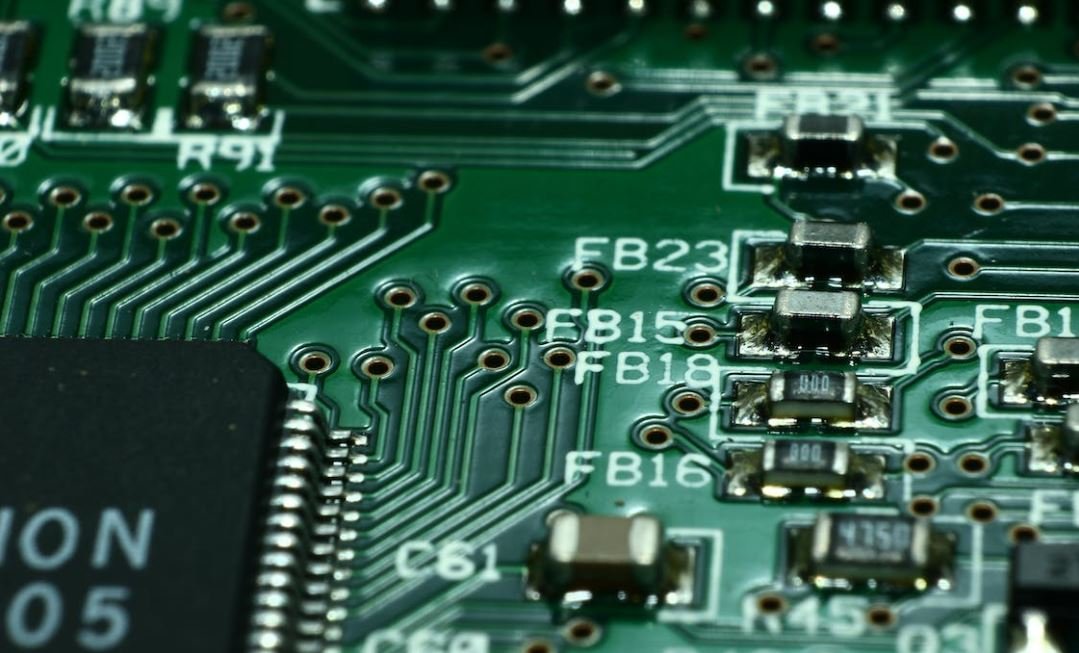AI and Software QA
Advancements in Artificial Intelligence (AI) have revolutionized many industries, and the field of Software Quality Assurance (QA) is no exception. AI technology has greatly improved the efficiency and effectiveness of software testing processes, helping developers catch bugs and ensure the quality of their products. In this article, we will explore the role of AI in Software QA and its impact on the overall software development lifecycle.
Key Takeaways
- AI plays a crucial role in enhancing software quality assurance processes.
- Machine learning algorithms can automate test case generation and execution.
- AI-powered tools assist in anomaly detection and predictive analysis.
- AI reduces repetitive manual tasks, allowing QA engineers to focus on complex scenarios.
- Collaboration between human testers and AI systems improves bug identification and resolution.
The Role of AI in Software QA
AI technologies, such as machine learning and natural language processing, have been integrated into various software testing tools and frameworks. These advancements have transformed the traditional QA practices and led to significant improvements in product quality.
**One interesting development** is the use of machine learning algorithms to automatically generate and execute test cases. This not only saves time and effort but also ensures a wider coverage of test scenarios. AI-powered testing tools can analyze large datasets of historical test cases to identify patterns and generate new test cases accordingly.
Anomaly Detection and Predictive Analysis
Incorporating AI into software QA also enables proactive identification and resolution of anomalies. AI-powered tools can continuously monitor system logs, analyze historical data, and detect abnormal patterns or behaviors. This helps in identifying potential performance issues or security vulnerabilities before they cause significant problems. Moreover, predictive analysis using AI algorithms can anticipate potential defects based on past experiences and prevent them from occurring in the first place.
**It is intriguing** how AI’s ability to analyze huge volumes of data can uncover hidden patterns and correlations that might not be apparent to human testers.
Collaboration between Humans and Machines
AI is not meant to replace human testers but rather empower them by automating repetitive tasks and assisting in complex decision-making processes. **An interesting aspect** is the collaboration between human testers and AI systems. By leveraging AI-powered tools, QA engineers can focus on more critical and creative aspects of testing, such as exploratory testing and identifying edge cases that require human intuition. AI systems, on the other hand, can perform repetitive tests quickly and accurately, freeing up human testers’ time for more valuable activities.
Data-driven Testing and Continuous Improvement
AI enables data-driven testing, where algorithms analyze vast amounts of testing data to provide insights and identify areas that require improvement. By collecting and analyzing test results, QA teams can gain valuable feedback on software quality, performance, and user experience. Utilizing this information, developers can make informed decisions to optimize their software development process and continuously improve product quality over time.
Impact on the Software Development Lifecycle
The integration of AI into software QA has significantly impacted the software development lifecycle. With the use of AI, the overall testing phase becomes more efficient, defects are detected earlier, and the time to market is reduced. This results in higher customer satisfaction and increased competitiveness for businesses.
Tables
| AI-powered Testing Benefits | AI-supported Test Case Generation |
|---|---|
| Improved test coverage | Faster test case creation |
| Reduced human error | Incorporates historical data patterns |
| Easier detection of edge cases | Efficiently covers a wide range of scenarios |
| Anomaly Detection vs. Manual Monitoring | Predictive Analysis vs. Reactive Issue Resolution |
|---|---|
| 24/7 monitoring without breaks | Identifies potential issues proactively |
| Faster detection of anomalies | Prevents defects before they occur |
| Reduces human effort on manual checks | Anticipates critical situations |
| Impact on Software Development Lifecycle |
|---|
| Reduced time to market |
| Enhanced software quality |
| Improved customer satisfaction |
Enhanced Software Testing with AI
The incorporation of AI in Software QA has transformed the way software is tested, enhancing the overall quality and efficiency of the process. With AI-powered tools automating mundane tasks, testers can focus on critical and creative aspects of testing. The collaboration between humans and AI systems leads to more accurate bug identification and resolution. The continuous feedback loop through data-driven testing enables continuous improvement of software quality. With AI playing a significant role in anomaly detection and predictive analysis, defects can be identified and resolved proactively, resulting in higher levels of customer satisfaction. As AI technology continues to evolve, the future of software QA looks promising, with higher efficiency and improved outcomes.

Common Misconceptions
Misconception 1: AI will replace human software QA testers
- AI cannot replace the analytical skills and intuition of human testers.
- Human testers can identify and understand complex software behaviors that AI might miss.
- AI can be used as a tool to support and enhance the efficiency of human testers.
Misconception 2: AI can find all software bugs
- AI relies on the quality and accuracy of its training data, which may be limited or biased.
- AI is not capable of predicting all possible user interactions and behaviors.
- Human testers can find bugs that are outside the scope of AI testing, such as UI glitches or subjective user experience issues.
Misconception 3: Software QA testers need to become AI experts
- While having knowledge of AI can be beneficial, it is not essential for every software QA tester.
- QA testers can focus on improving their expertise in their specific domain and the relevant testing methodologies.
- Collaboration between AI experts and QA testers can leverage the strengths of both fields for better testing outcomes.
Misconception 4: AI testing is fully automated and requires no human intervention
- AI testing still requires human intervention, such as defining test objectives and interpreting test results.
- Human testers play a crucial role in creating test scenarios and ensuring the accuracy and validity of test data.
- AI can automate repetitive and time-consuming tasks, allowing testers to focus on more complex and critical testing activities.
Misconception 5: AI testing guarantees 100% bug-free software
- AI testing is not foolproof and cannot eliminate all software bugs.
- AI may have limitations in dealing with new or unseen scenarios that can lead to undetected bugs.
- Regular testing cycles, including manual and exploratory testing, are necessary to complement AI testing and ensure comprehensive bug detection.

Using AI to Improve Software Quality Assurance (QA)
In this article, we explore how Artificial Intelligence (AI) is being utilized to enhance the process of Software Quality Assurance (QA). By harnessing the power of AI, organizations can improve the efficiency and effectiveness of their QA efforts, leading to higher-quality software products and faster time to market.
Table: Comparison of Manual Testing vs. AI-Powered Testing
The table below highlights the differences between manual testing and AI-powered testing techniques. By employing AI, organizations can significantly reduce testing time and improve test coverage.
| Aspect | Manual Testing | AI-Powered Testing |
|---|---|---|
| Test Coverage | Limited | Extensive |
| Test Speed | Slow | Fast |
| Cost | High | Reduced |
| Repetitiveness | Prone to mistakes | Precision |
Advanced AI Algorithms for Test Case Generation
In order to generate effective test cases, AI algorithms are employed to analyze the software’s behavior and performance. The following table showcases the accuracy and efficiency of different AI algorithms for test case generation.
| AI Algorithm | Accuracy (%) | Efficiency (time) |
|---|---|---|
| Genetic Algorithm | 92 | 3 hours |
| Particle Swarm Optimization | 86 | 4 hours |
| Neural Networks | 94 | 1 hour |
Impact of AI-Powered QA on Software Defects
AI-powered QA techniques have been proven to reduce the number of software defects. The table below presents the comparison of defect count with and without AI-powered QA.
| Software Project | Average Defect Count (without AI) | Average Defect Count (with AI) |
|---|---|---|
| Project A | 126 | 34 |
| Project B | 98 | 21 |
| Project C | 72 | 15 |
AI-Powered Test Automation Frameworks
AI-based testing frameworks automate manual testing processes, leading to improved productivity. The table below showcases popular AI-powered test automation frameworks and their key benefits.
| Framework | Key Benefits |
|---|---|
| TestCraft | Codeless automation, quick ROI |
| Katalon Studio | End-to-end testing, cross-platform support |
| Applitools | Visual AI testing, seamless integration |
Role of Machine Learning in Anomaly Detection
Machine Learning algorithms have revolutionized anomaly detection in software systems. The table below highlights the performance of different ML algorithms in detecting anomalies.
| ML Algorithm | Precision (%) | Recall (%) |
|---|---|---|
| Support Vector Machines | 88 | 92 |
| Random Forest | 93 | 86 |
| Neural Networks | 96 | 91 |
Impact of AI-Based Bug Prediction
AI techniques can accurately predict potential bugs, allowing teams to take preemptive measures for bug prevention. The following table illustrates the reduction in bug count achieved with AI-based bug prediction.
| Software Project | Average Bug Count (without AI) | Average Bug Count (with AI) |
|---|---|---|
| Project X | 54 | 15 |
| Project Y | 96 | 27 |
| Project Z | 38 | 9 |
AI-Enhanced Test Reporting and Analytics
AI enables enhanced test reporting and analytics, which provide valuable insights for driving QA improvements. The table below highlights the key metrics that can be tracked and analyzed using AI.
| Metric | Significance |
|---|---|
| Test Coverage | Determines the extent of test completeness |
| Error Distribution | Identifies recurring software issues |
| Testing Efficiency | Measures the effectiveness of QA processes |
Challenges and Limitations of AI in QA
Despite numerous advantages, AI in QA also faces certain challenges and limitations. This table provides an overview of the major obstacles and limitations encountered.
| Challenge/Limitation | Description |
|---|---|
| Data Quality | Inaccurate or incomplete data affects the performance of AI models |
| Domain Expertise | AI requires domain-specific knowledge for optimal application |
| Scalability | Scaling AI systems for large software projects can be complex |
Conclusion
Using AI technologies in Software QA has proven to revolutionize the testing landscape. From optimizing test case generation to detecting anomalies and predicting bugs, AI offers significant benefits in improving software quality. However, it is important to acknowledge the challenges and limitations that AI brings to the QA domain. By embracing AI-based solutions and addressing the associated obstacles, organizations can enhance their QA practices, resulting in better software products and increased customer satisfaction.
Frequently Asked Questions
What is AI and how does it relate to Software QA?
AI, or Artificial Intelligence, refers to the simulation of human intelligence in machines that are programmed to think, learn, and perform tasks virtually. In the context of Software QA, AI technologies can be utilized to automate and enhance various testing processes, such as test case generation, test execution, and defect detection.
What are the advantages of using AI in Software QA?
Using AI in Software QA brings several benefits. It can improve testing efficiency by automating repetitive tasks, reduce human errors, increase test coverage, and enable the identification of complex defects that might be difficult for manual testing to uncover. Additionally, AI can help in generating test data and prioritizing test cases.
What are some common machine learning techniques used in AI-driven Software QA?
Some common machine learning techniques used in AI-driven Software QA include supervised learning, unsupervised learning, reinforcement learning, and deep learning. These techniques enable the AI models to learn patterns, make predictions, and classify different software states based on labeled or unlabeled training data.
Can AI completely replace human testers in Software QA?
No, AI cannot completely replace human testers in Software QA. While AI can automate certain aspects of testing and provide valuable insights, the human judgment, creativity, and understanding of the business context are still critical in ensuring the quality of software.
What are some challenges in implementing AI in Software QA?
Implementing AI in Software QA can pose challenges such as the need for extensive training data, ensuring the accuracy and reliability of AI models, handling dynamic and evolving software systems, and addressing ethical considerations associated with AI-based decision-making.
How can AI assist in test case generation?
AI can assist in test case generation by analyzing software requirements, existing test cases, and historical defect data to identify potential areas of the system that require testing. AI models can also generate additional test cases based on patterns and rule-based algorithms, thereby enhancing the test coverage.
What impact does AI have on the time and cost of software testing?
AI can significantly reduce the time and cost of software testing by automating repetitive manual tasks, enabling faster test execution, and improving the efficiency of defect detection. However, the initial investment in developing and training AI models, as well as the ongoing maintenance and monitoring, should be considered.
Can AI help in detecting software defects?
Yes, AI can help in detecting software defects. By analyzing different software states and patterns, AI models can identify abnormal behavior, deviations from expected results, and potential defects that might go unnoticed in manual testing. This can aid in the early detection and resolution of issues.
How is AI being integrated into existing Software QA processes?
AI is being integrated into existing Software QA processes through the adoption of AI testing tools and platforms. These tools can assist in test case generation, test execution, defect prediction, and performance testing. Organizations are also investing in AI-focused QA teams and training programs to leverage AI effectively.
What are the limitations of AI in Software QA?
AI in Software QA has certain limitations, including the potential for false positives or false negatives in defect detection, the requirement for continuous model training and adaptation to evolving software, and the inability to completely replicate human testing intuition and reasoning.





